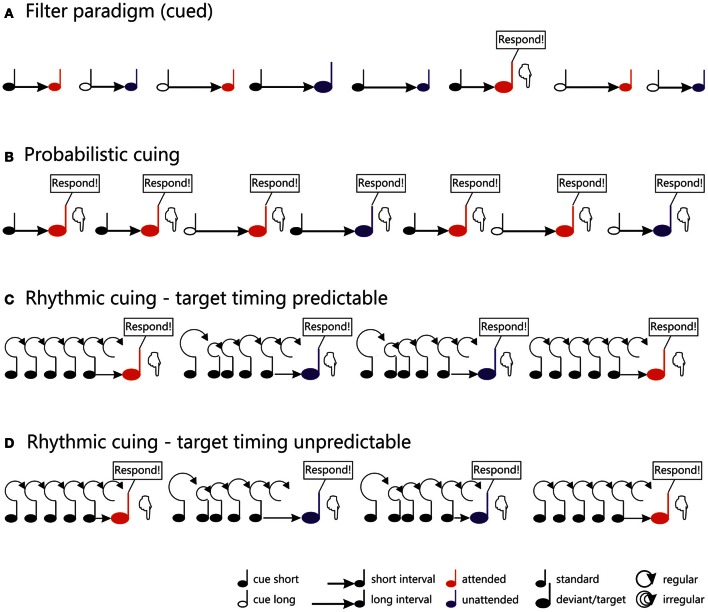Figure 1.
General outlines of stimulus configurations used in different temporal orienting tasks. In the cued filter paradigm (A), as used e.g., in Lange (2012a), each trial consists of a symbolic cue (black note symbol) indicating whether the short (filled) or the long (unfilled) interval has to be monitored for deviant sounds. Frequent standard sounds (small note symbols) and infrequent deviantssounds (large note symbols) follow the cue after a short or long interval (indicated by the length of the arrow). Standards and deviants presented at attended and unattended time points are marked by red (attended) and blue (unattended) note symbols, respectively. In this paradigm, only attended deviants require a response, as indicated in the figure. In the probabilistic cuing paradigm (B) as used in Lampar and Lange (2011, Experiment 1), the symbolic cue (black note symbol) indicates the time point, when the target will most likely be presented: Either at the end of the short (filled) or at the end of the long (unfilled) interval. In this paradigm, sounds presented at both attended (red) and unattended (blue) time points require a response and are therefore regarded as targets (large note symbols) (C,D). In the rhythmic cuing task, a regular or irregular induction sequence (black note symbols connected by circles of fixed or variable size) is presented prior to the target (indicated by a red or blue note symbol, depending on whether it is preceded by a regular or an irregular sequence). In the task displayed in (C) (Lange, 2009), the timing of the target with respect to the sequence was fixed (indicated by the identical length of the arrows connecting the sequence to the target), whereas target timing varied in the task outlined in (D) (Lange, 2010), as reflected in the variable length of the arrows.

